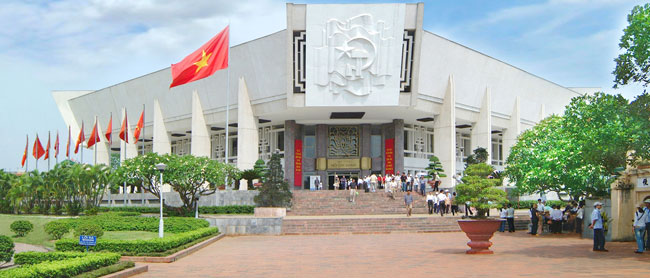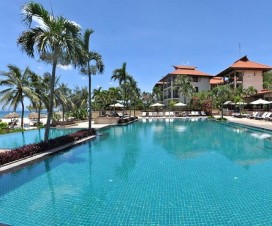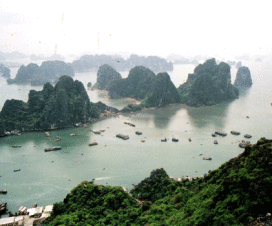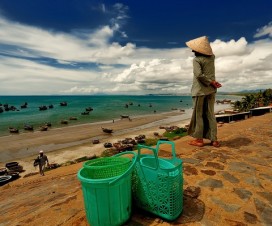Over 1,000 years of establishment and development, Hanoi has become the national cultural, economic and political center of Vietnam, where most Vietnamese dynasties have left their imprint as well as cultural and historical vestiges still remained at museums in Hanoi.
The system of museums in Hanoi are the richest collection of documents on lands and people of Vietnam in general, Hanoi in particular. They play an important role in preservation and promotion of the local cultural and historical values which serve study tours by school pupils, students or other visitors.
In the system of national museums of the country, Vietnam Museum of Ethnology is both a research centre and a public museum exhibiting the ethnic groups of Vietnam. The mission of the Museum is scientific research, collection, documentation, conservation, exhibition and preserving the cultural and historic patrimony of the nation’s different ethnic groups. The museum also serves to guide research, conservation, and technology that are specific to the work of an ethnographic museum.
Vietnam Fine Arts Museum is considered as one of the most crucial museums in maintaining and promoting the treasure of cultural, artistic heritages of Vietnamese ethnic communities. Visiting the Museum, viewer can understand the entire history of Vietnam fine arts through the collections, exhibits that are displayed here.
Located on the Tong Dan street, the museum of Vietnamese Revolution was established in August 1959 in a two-storey building. It was redesigned into 30 galleries and as of 2008 contains in excess of 40,000 historical exhibits.The visit to Museum would be a time to understand the changing times of the society that ranges from the Vietnamese streets to the seats of power. The objects on display offer insight into the culture of Vietnam.
Ho Chi Minh Museum is located in the same compound with the Ho Chi Minh Mausoleum and the Presidential Palace. It was established during 1985 – 1990. It has a collection of 3000 paintings and 700 artifacts. The five-storey building of the museum is divided into thematic units. Next to the museum is Ho Chi Minh mausoleum surrounded by well-kept gardens and guarded by soldiers. The embalmed body of the Vietnamese leader is preserved in a glass sarcophagus.
Recently, the museum of Hanoi was built to celebrate the Thang Long-Hanoi 1,000 year anniversary event. This is a modern architectural structure with the total area 53,000m2 on Pham Hung street. Exhibits will be drawn from a collection of some 17,000 documents and artifacts relating to the history of the ancient capital.
In the process of globalization, museum is considered not only the “linking bridge” of the past, present and future, but also cultural communities. Naturally, the values of culture and history are highlighted the key elements of tourist products to attract visitors.
Museum has enough potentials and advantages of a tourist attraction where can satisfy the cultural and spiritual demands of visitors.
However, to combine tourism and museums, diversifying and improving the quality of tourist products are one of the most important solutions to museum tourism. These include the quantity and quality of the original objects, forms (colour, sound, light… ) on display and tourist services (souvenir shops, restaurants…).
In addition, the content and methods of interpretation significantly contribute to “display language” – the voice of original objects which helps tourists to acquire knowledge about culture and history through objects on display.
Furthermore, the tourist products in museums should avoid the duplication of content and forms on display to fully exploit potentials of museum tourism.
Source: TITC
Collected by Vietnam hotel





